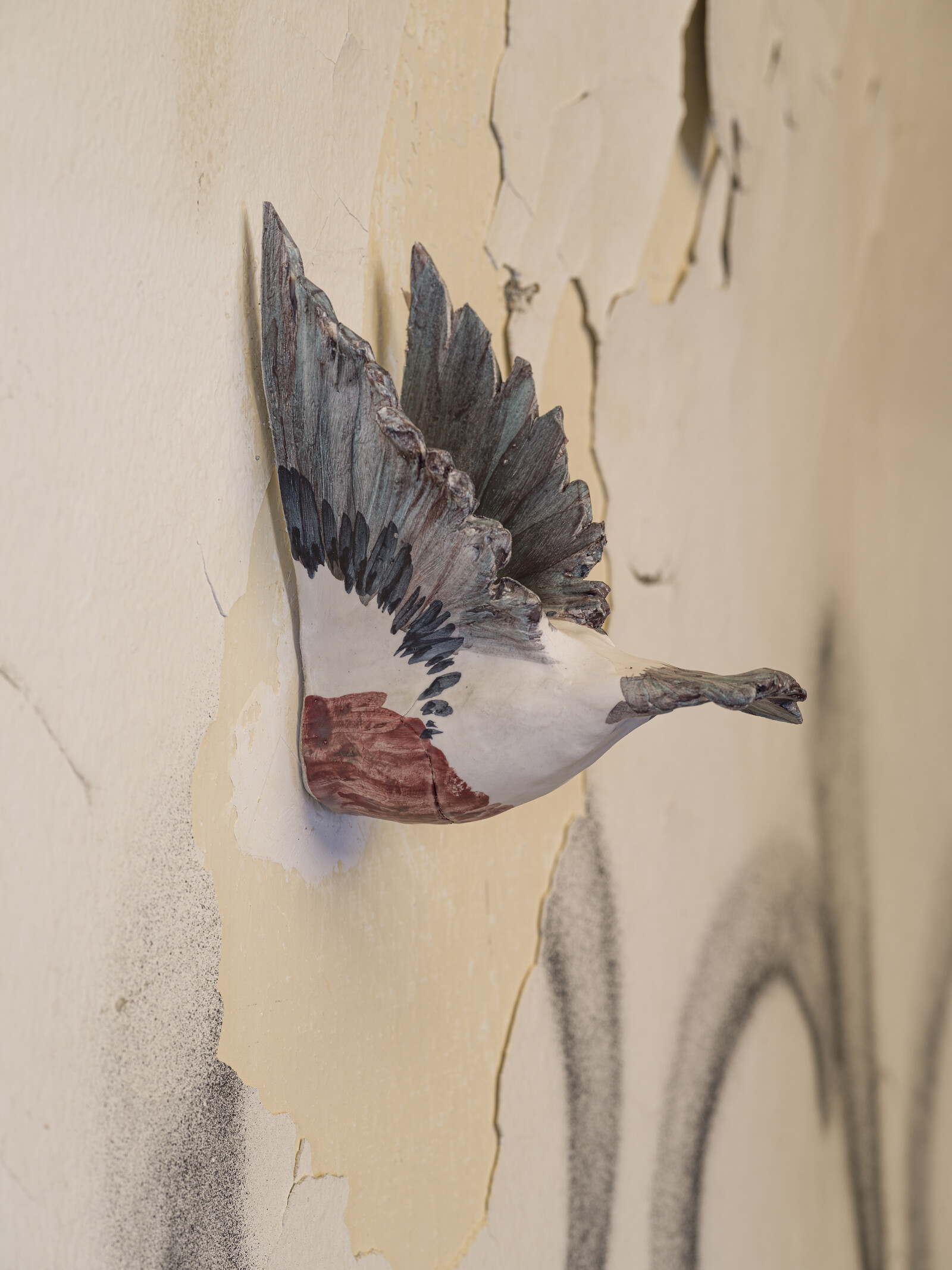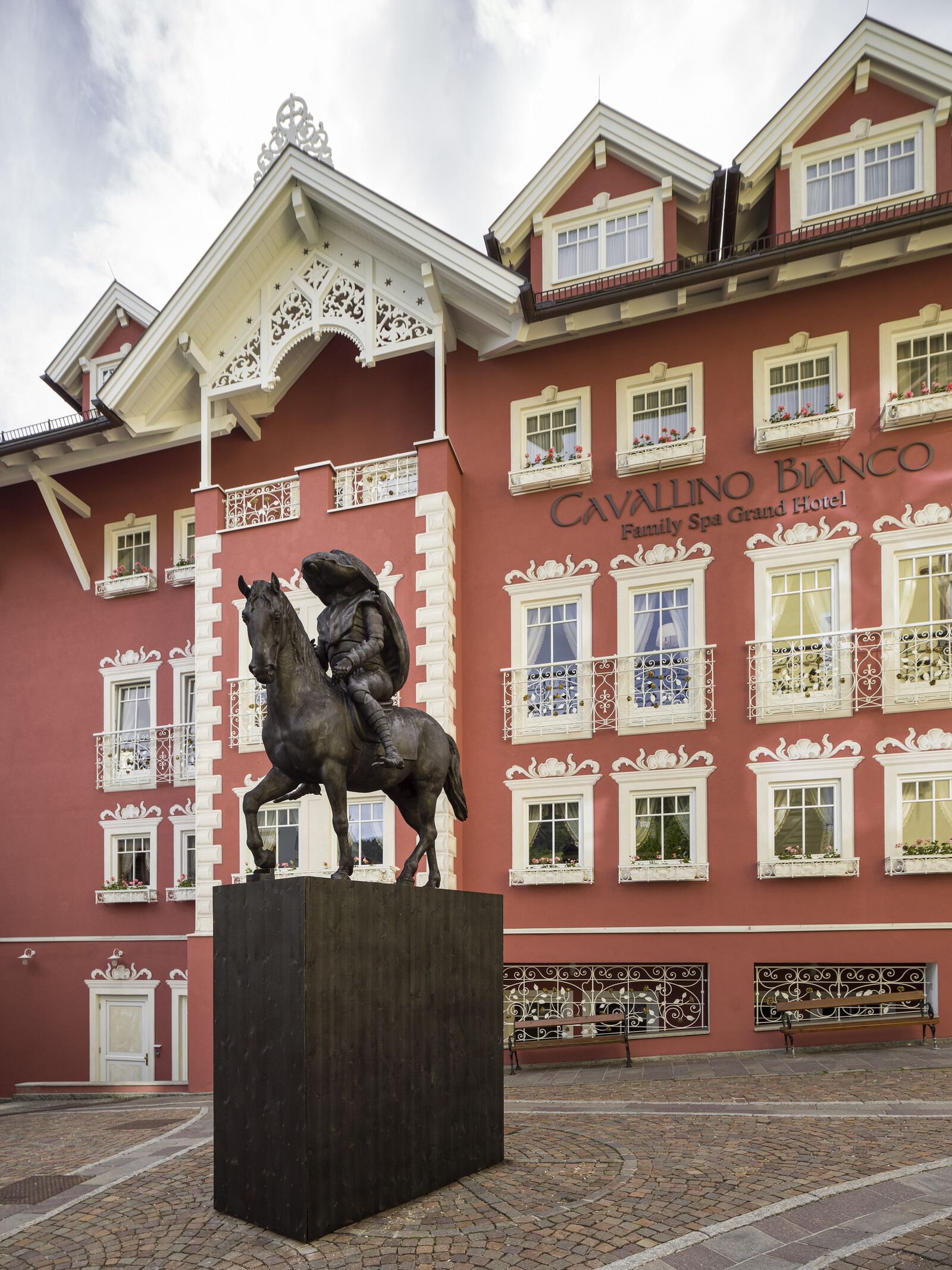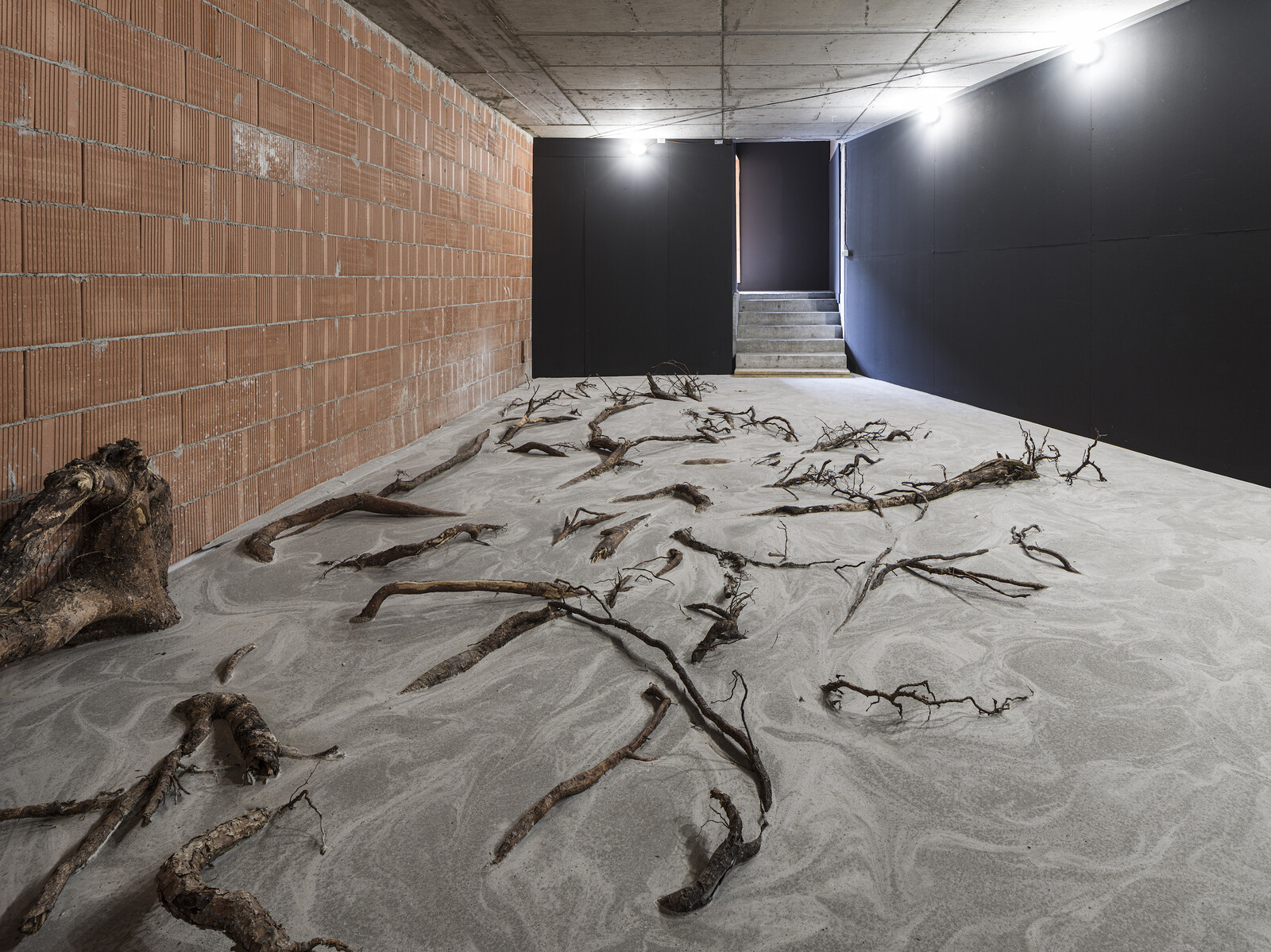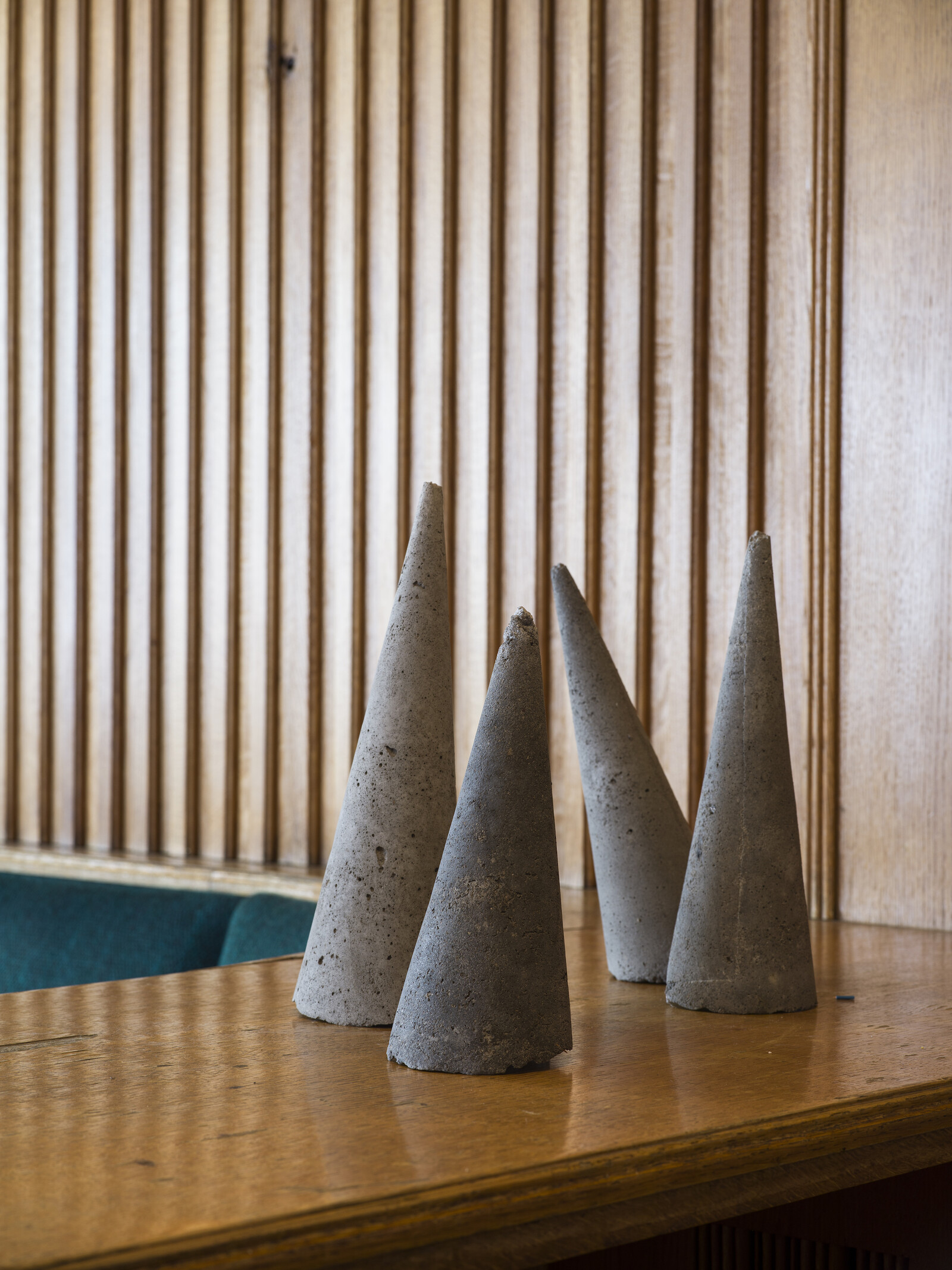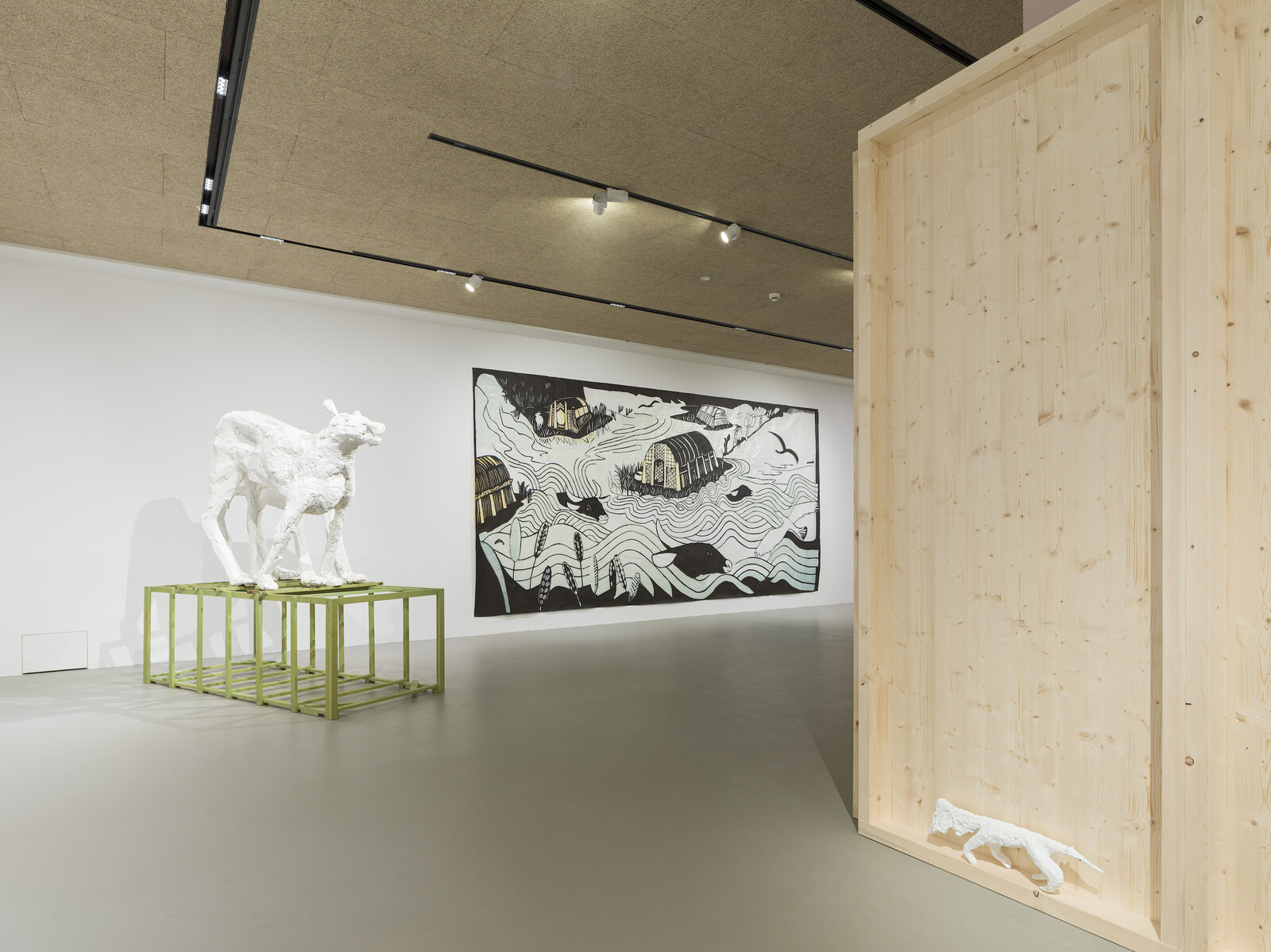May 31–September 1, 2024
The ninth Biennale Gherdëina takes its title from a Ladin myth that is, in part, a cautionary tale. It narrates the series of tragedies that follows when the Fanes—the indigenous people of the Dolomites—betray a pact with their animal allies, the marmots. The Kingdom of Fanes—a national epic that roams across Mediterranean, North Africa, and the Middle East—informs an exhibition that dwells on themes of interspecies relations, communal identity, and collaboration. As a place where people, cultures, and languages meet (German, Italian, and to a lesser extent, Ladin—the language of the Fanes—are used interchangeably), the Dolomite mountains on the border of Italy and Austria provide the ideal backdrop for these reflections.
In the darkened theater of Cësa di Ladins Museum, a bird’s song plays over speakers. Starting off with sweet melodious notes, Ruth Beraha’s Il cielo è deI violenti (The sky belongs to the violent, 2024) soon multiplies and swells, converging in discordant screeches that remind us that nature can be comforting and accommodating but also menacing and overwhelming—like the marmot, a cute-looking ground squirrel which has, reasonably, been described as “vicious.”1 The song loops back to the beginning, maintaining the tension between calm and panic. Beraha picks up the ornithological note again in Fortune’s always hiding, I’ve looked everywhere (2024), where ceramic birds appear to fly into the walls of the Hotel Ladinia. At first the work appears fantastical, as though the birds are disappearing into a world beyond, but on repeated viewings it evokes—just as ominously—the millions of birds that crash into skyscrapers each year.
The Pontives industrial park hosts most of the moving image works, one standout being a video essay by Nadim Choufi on the future of human and other life forms in an economy that exploits the labor of both. Here you’ll also find the work of Atelier dell’Errore. This collective emerged to accommodate people who had aged out of a recreative program for neurodivergent young people in Reggio Emilia and Bergamo. All their works are made collectively, feature animals as their primary subjects, and build on any mistakes, instead of erasing them. In keeping with their principles, they’ve shown their experiments in the process of creating Marmottoloide (2024), a mixed-media drawing on an emergency blanket-like material, conjuring images of migrants who use the blankets to protect themselves from exposure when crossing the Mediterranean. The multicolored marmot on the heat sheet canvas wears an inscrutable expression but is proud in its stance, recalling the prophesies that the ground squirrel will stand alongside the Fanes when their kingdom rises again. It’s a projection into a future that is unpredictable but laden with hope, stressing interdependence as a means of survival. Blending myth and contemporary issues, it’s a mashup of timelines that resonates whenever I see the biennial posters featuring Atelier dell’Errore’s marmot around the town.
Ortisei is surrounded by forests, so it feels natural for wood to form both material and motif in several works commissioned for the biennial. Julius von Bismarck’s monumental Beetle On A Horse (2024) is placed in the town center; if you stand in the right position, you can glimpse the forest behind it where the stone pine wood out of which it’s carved, and the bark beetle it depicts, are derived. In an alternate reality that memorializes bugs in the place of humans and more charismatic larger animals, the bark beetle is depicted as a conqueror. In some ways it is: the work is also a comment on the devastation of entire woodland areas by the beetle, which (aided by humans planting trees too closely together, in a less positive form of interspecies collaboration) has infested the forest. In one of the more visually impactful works, Ingela Ihrman’s First Came the Ocean (2024) borrows from archaeology and uses wood to recreate the fossils of a ginormous creature, recalling the formation of the Dolomite mountain ranges through the accumulation of fossilized coral reefs over 250 million years. Other works concealed the material, like Nadia Kaabi Linke’s Mushroom (2024), where a tree peaks out in patchy gaps from beneath the concrete in which it is submerged, Laurent Le Deunff’s Chouette des neiges, Crocodile, Escargot (2024), where it could pass for stone, or Alessandro Biggio’s burnt-down trees molded with water to form Ash Cones (2010–ongoing).
“The Parliament of Marmots” also pays tribute to Lin May Saeed (1973–2023), who had agreed to take part in this edition shortly before her untimely passing. Her work, centering animals in mythical tableaus and functioning as an extension of her animal rights activism, embodies the best of this edition, which though firmly rooted in myth and fictional narratives, is most resonant when it connects these improbable scenarios with current real-life concerns.
Megan Clement, “They kill their own parents, children and neighbours. Now life is even worse for the vicious alpine marmot,” in the Guardian (September 28, 2023): https://www.theguardian.com/environment/2023/sep/28/they-kill-their-own-parents-children-and-neighbours-now-life-is-even-worse-for-the-vicious-alpine-marmot-aoe.

